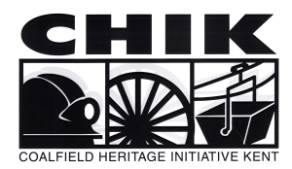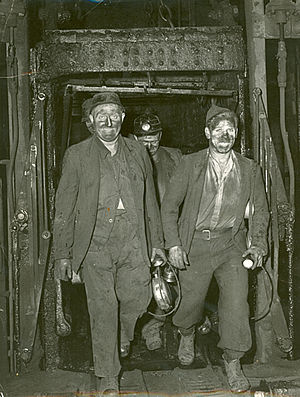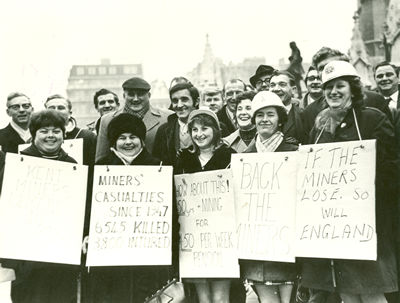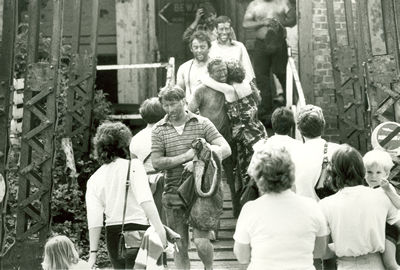Betteshanger Colliery

Betteshanger Colliery was the biggest colliery in Kent. Most of the Betteshanger miners lived three miles away from the Colliery at Mill Hill.

Betteshanger Colliery 1933
Coal was found in the Lydden valley near Deal on December 12th 1912 at 1476ft. Following the end of the First World War, Dorman Long & Co. purchased mineral rights to large areas of land in the Deal area. Kent coal burned very hot, making it suitable for the Steel Industry and the company wanted their own supply. Shortly after making this purchase, Dorman Long & Co. joined forces with another company, Messrs. S. Pearson & Sons (who had built the Admiralty Harbour at Dover), to form Pearson & Dorman Long Ltd. This company had a controlling interest in the Channel Steel Company which had proved the existence of 100 million tons of iron ore near Dover.
Pearson & Dorman Long Ltd built a railway line to the site of their new Colliery. The new colliery's first shaft was cut on May 19th, 1924. It was planned to sink collieries at Wingham, Fleet, Woodnesborough, Stodmarsh and Deal.
Betteshanger was the biggest Kent mine, with shafts of 24ft (7.3 metres) diameter. It flooded twice during sinking, but using the cementation process to seal the shaft sides, the pit progressed quickly and reached coal in 1927.
The Colliery's circular road was the length of a dog racing circuit and was apparently used by miners to race their whippets.

Shaft Sinking, Betteshanger Colliery. 1927
Note the water in the pit bottom and the waterproofs being worn by the men.

The first coal. Betteshanger Colliery. 1927
The first hoppit of coal being brought to the surface.
After the first shaft was sunk, virtually over night, 1500 miners and their families came down to live in Deal, the closest town to the pit. Deal was then a genteel seaside resort and the arrival of these "rough and dirty men with unintelligible accents" horrified many of the residents. Lodging houses, cafes and pubs soon had signs up saying "no miners" while butchers and grocers sold the worst quality goods as cheap miner's specials.

End of shift, 1960’s
As part of the Mining Industry Act of 1926, a Government run Mines Welfare Committee was set up. The Mines Welfare Committee established grants to provide better welfare facilities for Colliers. Due to this new initiative, pithead baths at Betteshanger were opened in April 1934, allowing the Colliers to return home reasonably clean.
Deputies' houses were built close to the pit, however it was not until 1929 that the farmlands of Mill Hill on the outskirts of Deal were acquired for a new colliery estate.
Betteshanger attracted a lot of the hard-line union men blacklisted in their home areas after the General Strike of 1926 and consequently Betteshanger miners were regarded as the most militant in Kent.
In 1938 a strike was called when some of the pit boys refused to accept the behaviour of the two deputies responsible for their supervision. Later in the day, the rest of the pit boys and all the Colliers joined them, largely due to the fact that the pit could not run properly without the pit boys. Work was only resumed after agreement was given to hold a public enquiry.
Betteshanger was the only pit to strike during the Second World War. The colliers reason for striking was over allowances for working a difficult seam because the conditions changed from week to week. This resulted in three union officials being imprisoned and over 1000 men being given the option of a fine or hard labour. The authorities were keen to suppress the strike: there was a danger that it could spread to other mines and the Government could not afford such a strike in the middle of a war. All but nine of the miners refused to pay. In the face of having to find prison spaces for 1000 men, the government decided to take no action and released the three imprisoned officials.

Miners wives at a London rally during the 1972 strike

End of a brief occupation of the pit during the 1984 strike. Those involved were dismissed for trespass. After the national strike was over the miners fought a local dispute to get them reinstated, making Betteshanger the last pit in Britain back to work in 1985. The men were not reinstated.
Betteshanger was never really allowed to develop to it’s full potential with restricted quotas and markets holding back production.
Betteshanger was the last colliery to return to work following the 1984-5 miners strike. Betteshanger Colliery was also the last Colliery to remain open in Kent, closing in 1989.